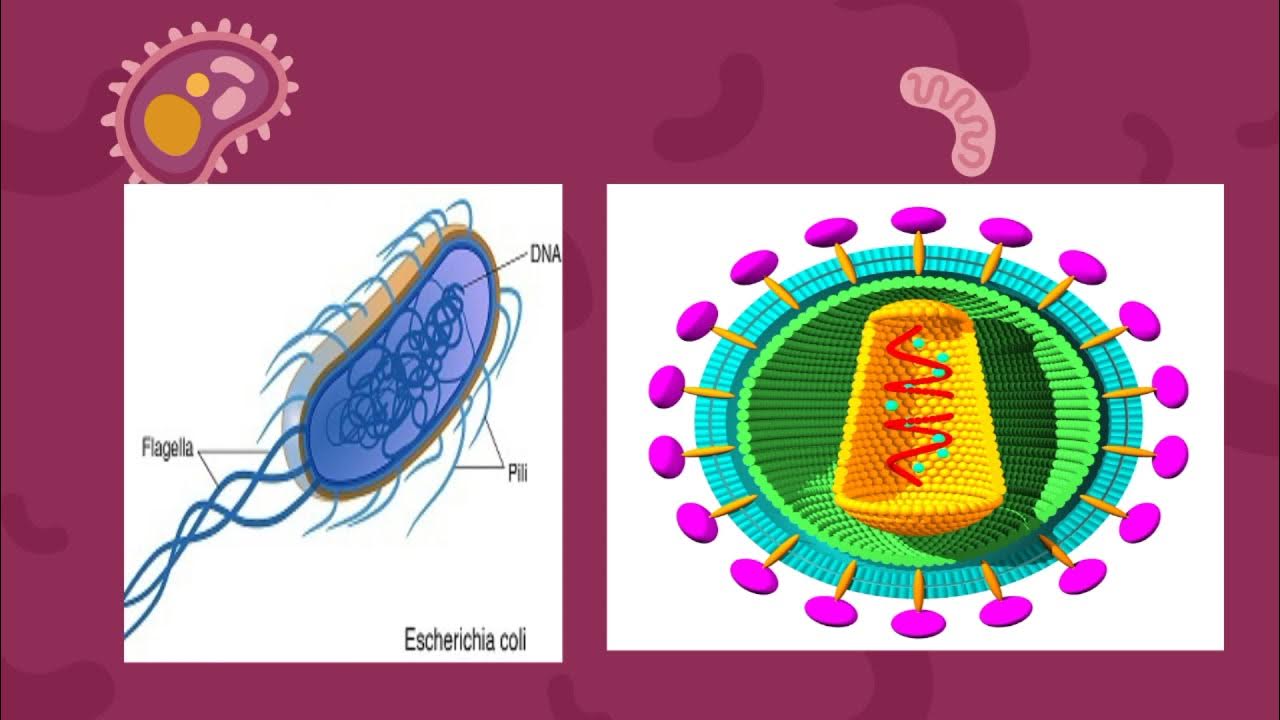Types of Mutations | Changes in the Gene Pool | Genetic Drift | Biology 🧬
Summary
TLDRThis video explains key concepts in genetics, focusing on mutations in DNA. It covers nucleotide mutations like silent, missense, nonsense, and frameshift mutations, explaining how they affect proteins. The video also delves into chromosomal mutations such as deletion, duplication, inversion, insertion, and translocation, with examples like sickle cell disease and chronic myeloid leukemia. Through engaging explanations and mnemonics, the video helps viewers understand how mutations occur at both the nucleotide and chromosomal levels, and their impact on health and disease. This serves as an educational resource for anyone studying genetics or related fields.
Takeaways
- 😀 Nucleotide mutations can be silent, missense, nonsense, insertion, or deletion mutations.
- 😀 Silent mutations have no effect on the protein, as seen with leucine coding changes like TTA to TTG.
- 😀 Missense mutations involve a substitution of one amino acid for another, such as glutamate to valine in sickle cell disease.
- 😀 Nonsense mutations introduce a premature stop codon, halting protein synthesis, as seen with UGG to UGA.
- 😀 Frameshift mutations occur due to insertions or deletions of nucleotides, shifting the reading frame of codons.
- 😀 Sickle cell disease is an example of a missense mutation, where red blood cells become sickled and less efficient.
- 😀 Malaria resistance is a side effect of sickle cell disease, as the mutated cells prevent malaria from completing its lifecycle.
- 😀 Chromosomal mutations include deletion, duplication, inversion, insertion, and translocation.
- 😀 Deletion in chromosomal mutations can result in the loss of a portion of a chromosome, affecting gene function.
- 😀 Translocation involves the exchange of chromosome segments, such as the exchange between chromosomes 9 and 22 in chronic myeloid leukemia (CML).
- 😀 The video uses mnemonics like 'you go girl' to emphasize that 'UGG' is not a stop codon, while 'UGA' and 'UAA' are.
Q & A
What is the difference between nucleotide mutations and chromosomal mutations?
-Nucleotide mutations refer to changes in the individual nucleotides (such as silent, missense, or nonsense mutations), while chromosomal mutations involve larger-scale alterations in chromosomes, like deletions, duplications, inversions, insertions, and translocations.
What is a silent mutation, and how does it affect protein function?
-A silent mutation is a change in the DNA sequence that does not alter the amino acid sequence of the resulting protein. For example, a mutation from TTA to TTG still codes for leucine, meaning the protein remains unaffected.
How does a missense mutation impact protein structure or function?
-A missense mutation results in the substitution of one amino acid for another, potentially altering the protein's structure or function. For example, in sickle cell disease, glutamate is replaced by valine, causing red blood cells to adopt an abnormal sickle shape.
What is a nonsense mutation, and how does it affect protein synthesis?
-A nonsense mutation introduces a stop codon in the DNA sequence, which prematurely halts protein synthesis. This can lead to a truncated and nonfunctional protein. For example, changing UGG to UGA causes an early stop in translation.
What is a frameshift mutation, and how is it caused?
-A frameshift mutation occurs when there is an insertion or deletion of nucleotides in the DNA sequence, shifting the reading frame. This causes a change in the amino acid sequence downstream from the mutation, often resulting in a nonfunctional protein.
How does a frameshift mutation differ from a point mutation?
-A frameshift mutation shifts the entire reading frame of the gene due to insertions or deletions, while a point mutation involves a change in a single nucleotide, which may or may not affect the protein's function.
What are chromosomal mutations, and how do they differ from nucleotide mutations?
-Chromosomal mutations involve changes to the structure or number of chromosomes, including deletions, duplications, inversions, insertions, and translocations, while nucleotide mutations occur at the level of individual nucleotides within the DNA sequence.
What is a translocation mutation, and how does it occur?
-A translocation mutation is a type of chromosomal mutation where parts of two chromosomes exchange genetic material. For example, in chronic myeloid leukemia (CML), chromosomes 9 and 22 exchange sections, leading to the formation of the BCR-ABL fusion gene.
How does sickle cell disease illustrate a missense mutation?
-In sickle cell disease, a missense mutation causes a substitution of glutamate with valine in the hemoglobin protein. This alteration results in red blood cells that are sickle-shaped instead of round, which can cause blockages in blood vessels.
Can you explain how duplications in chromosomes can lead to mutations?
-Duplications occur when a section of a chromosome is copied multiple times, which can lead to an imbalance in gene dosage. This can cause diseases or conditions depending on the genes affected by the duplication, such as developmental disorders.
Outlines

This section is available to paid users only. Please upgrade to access this part.
Upgrade NowMindmap

This section is available to paid users only. Please upgrade to access this part.
Upgrade NowKeywords

This section is available to paid users only. Please upgrade to access this part.
Upgrade NowHighlights

This section is available to paid users only. Please upgrade to access this part.
Upgrade NowTranscripts

This section is available to paid users only. Please upgrade to access this part.
Upgrade Now5.0 / 5 (0 votes)





